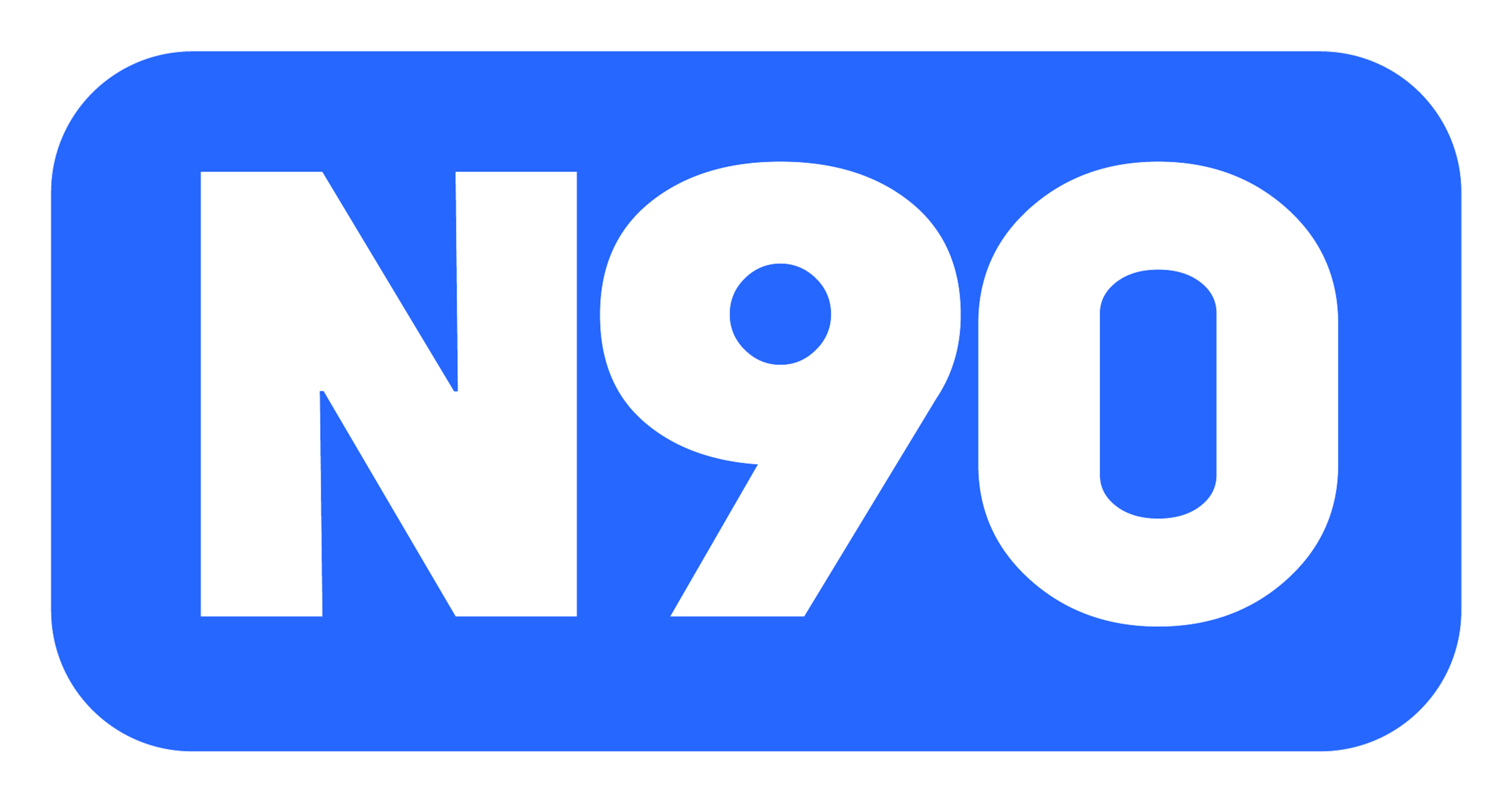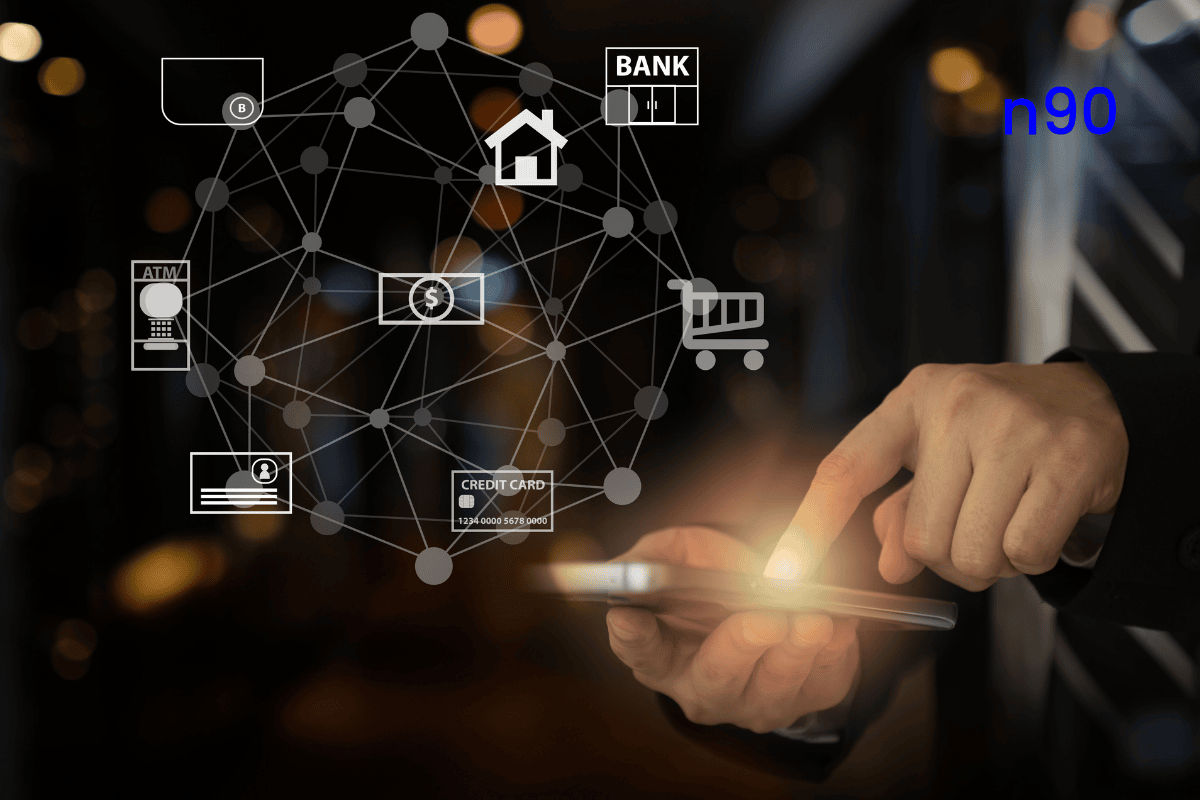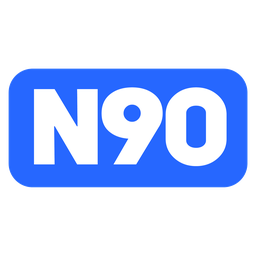With a projected annual growth rate (CAGR) of 30.58% from 2025 to 2029, the global digital banking platform market is rapidly expanding, reflecting a growing demand for faster, more innovative, and more accessible financial solutions. In the Philippines, this shift is fueling a surge in online banking, where traditional and fully digital banks offer streamlined services through apps and web platforms.
As Filipino entrepreneurs adapt to a more digital economy, small and medium enterprises (SMEs) increasingly rely on online banks to manage transactions, access credit, and reduce banking costs. Choosing the right platform can empower SMEs to run leaner and grow faster.
In this blog, you’ll discover what online banking means for your business, explore the best digital banks in the Philippines, and learn how to choose the right platform to simplify your operations and support your growth.
What Is an Online Bank?
An online bank allows customers to manage their finances through the internet, either via a website or a mobile app, without needing to visit a physical branch for most transactions. This includes traditional banks offering online services and fully digital banks operating entirely through digital platforms. Let’s understand these two in detail.
1. Traditional Banks with Online Platforms
These well-established banks like BDO, BPI, or Metrobank offer digital services as an extension of their branch network. Customers can check balances, transfer funds, and pay bills online, while still having access to in-person support when needed.
2. Fully Digital Banks
These banks, such as Tonik, Maya Bank, and GoTyme, operate without physical branches. All services (from opening an account to applying for a loan) are handled through a mobile app or website. They focus on convenience, faster processing, and lower fees through fully digital operations. These banks are licensed and regulated by the Bangko Sentral ng Pilipinas (BSP) under a framework designed for digital banks.
Where Does Mobile Banking Fit In?
Mobile banking is a feature, not a separate category. It refers to using smartphones and tablets to access banking services via apps. Traditional and digital banks offer mobile banking apps, which have become the preferred channel for day-to-day transactions like balance checks, fund transfers, and bill payments. It's a core part of what makes an online bank accessible and valuable to most users, including SMEs that need to manage cash flow on the go.
Online banking provides convenience and efficiency, whether through traditional or fully digital platforms. However, digital banks, in particular, offer tailored solutions that can significantly help SMEs manage their finances more effectively.
Why are Digital Banks Best Suited for SMEs?
For SME businesses, managing finances is critical. However, traditional banking often comes with obstacles like high fees, slow processing times, and limited access during non-business hours.
These hurdles can disrupt cash flow and hinder growth. Digital banks, however, are designed to address these very challenges, providing solutions that are faster, more cost-effective, and accessible.
Here’s why digital banks are the perfect fit for SMEs.
- Cost-Effectiveness: Digital banks have lower operating costs because they don’t have physical branches. This allows them to offer lower fees and better interest rates, which is ideal for SMEs looking to save on banking expenses.
- Faster Transactions: Digital banks provide quick processing times for transactions like fund transfers, bill payments, and loan applications. This helps SMEs manage cash flow more efficiently without delays, essential for smooth day-to-day operations.
- 24/7 Accessibility: With online-only services, digital banks allow SMEs to manage finances anytime and from anywhere. This flexibility is crucial for small businesses that need to handle financial tasks outside traditional banking hours.
- Convenience and Flexibility: Digital banks offer user-friendly platforms through mobile apps and websites, making it easy for SMEs to track expenses, make payments, and manage accounts—all in one place. This saves time and improves operational efficiency.
- Specialized Services: Many digital banks provide services tailored specifically for SMEs, such as small business loans, invoicing, and line-of-credit facilities, addressing the unique financial needs of smaller businesses.
- Streamlined Processes: Digital banks use automation and AI to simplify processes like loan approvals and account management, reducing paperwork and long waiting times common with traditional banks. This helps SMEs stay agile and focused on growth.
Digital banks offer SMEs a more efficient, cost-effective solution, focusing on convenience and speed. As digital banking expands in the Philippines, SME owners have even more opportunities to optimize their financial operations.
If, while managing your finances through a digital bank, you find that your business requires additional funds to continue growing, you can get funded from n90, which provides the flexibility you need with its various products.
Digital Banks in the Philippines
As of 2025, six digital banks have been granted licenses and are operational in the Philippines. These banks offer services primarily through digital platforms such as mobile apps and websites. With the recent expansion of the digital bank allowance to 10, more players are expected to enter the market in the coming years.
Here are the currently operational digital banks in the Philippines.
1. GoTyme Bank
GoTyme Bank is a digital banking platform launched as a partnership between Tyme and the Gokongwei Group, which includes Robinsons Bank. The bank aims to offer Filipinos a seamless and engaging banking experience, focusing on convenience and rewards.
One of its unique features is the “pay one, free one” transfer system, where users pay a small fee for one transfer and get the next one for free. GoTyme also provides a Go Save account with a 4% per annum interest rate, making it an attractive option for savers. Additionally, users can earn Go Rewards points when using their GoTyme debit cards at partner stores.
2. Maya Bank
Voyager Innovations powers Maya Bank and offers various digital banking services for retail customers and MSMEs (Micro, Small, and Medium Enterprises). It provides a suite of payment solutions, including payment links and Shopify plugins, designed specifically for businesses.
Maya Bank also offers savings accounts, personal loans, and flexi loans. Focusing on MSMEs, it is positioning itself as a go-to digital bank for small business owners who need easy access to banking tools and capital.
3. Overseas Filipino Bank (OFB)
Overseas Filipino Bank is a subsidiary of Landbank and caters to the needs of Filipinos working abroad. It’s the first government digital-only bank in the Philippines, offering services such as remittances, loans, and savings accounts. OFB enables overseas Filipinos to manage their finances online and through its mobile banking app.
Notably, the bank provides Visa debit cards that allow users to send remittances via Visa Direct, making it easier for OFWs to send money home securely and efficiently.
4. Tonik Digital Bank
Tonik Digital Bank, based in Singapore, is known for its emphasis on savings and user-friendly features. Tonik offers a unique savings account structure called Stashes, which allows users to save for specific goals like vacations, emergencies, or tuition fees.
With an interest rate of 4.5% per annum for group stashes, Tonik appeals to those looking for higher returns on their savings. Additionally, Tonik provides time deposits, savings accounts, and shop installment loans through its intuitive app.
5. UnionDigital Bank
UnionDigital Bank is a wholly owned subsidiary of Union Bank of the Philippines and provides a fully digital banking experience. It offers services such as savings accounts, time deposits, and cash loans.
One of Uniondigital's key features is the Ubeh Save account, which offers competitive interest rates of up to 4% per annum for higher balances. The bank also allows free transfers between UnionDigital accounts and other banks via PESONet or InstaPay. This is a great option for those who frequently need to send money to institutions.
6. UNOBank
UNOBank is owned by UNOAsia Pte Ltd, a fintech company based in Singapore. This digital bank offers various financial products, including savings accounts, time deposits, loans, and insurance.
One of its standout features is its partnership with Singlife, which allows it to offer insurance products such as coverage for medical costs, accidents, and even income loss due to unforeseen events. UNOBank provides a comprehensive digital banking experience, combining banking services with digital insurance to offer holistic financial solutions to its users.
With several digital banks now operational in the Philippines, each offering unique features and services, carefully evaluating which best suits your SME’s needs is essential.
How to Choose the Right Digital Bank for Your SME Business?
When choosing the right digital bank, several key factors must be considered. The right bank should align with your financial needs, lifestyle, and personal preferences. Here’s a guide to help you navigate the process.
- Security: A strong security framework helps ensure your funds and data are safe. Opt for a bank that offers robust security features such as military-grade encryption and two-factor authentication (2FA). Check if it is regulated by the Bangko Sentral ng Pilipinas (BSP) and if it offers real-time transaction alerts.
- User Experience: An intuitive design can save you time and frustration when using the app regularly. Hence, look for a fast, responsive, and user-friendly app that provides seamless access to key banking services like fund transfers, bill payments, and account management.
- Fees: Understanding all costs upfront helps you avoid unexpected expenses. Choose a digital bank with clear, transparent fees to avoid hidden charges. Check for low or no monthly maintenance fees and competitive rates for transactions and loans.
- Features: Ensure the bank offers a comprehensive set of services, such as savings accounts, loans, and budgeting tools. Specialized features such as invoicing, e-commerce integrations, and goal-based savings can add great value for personal and business users.
- Customer Support: Opt for a bank that offers 24/7 customer service through multiple channels such as chat, email, and phone. Quick and reliable support is essential when dealing with banking issues, especially in urgent situations.
- Integration: Look for banks that integrate well with other financial tools, e-wallets, or apps you already use. Easy connections with platforms like PayMaya or GCash can streamline financial management and simplify transactions.
As digital banking continues to evolve, choosing the right bank for your SME is essential, with key factors like security, fees, and user experience in mind. However, as your business grows, digital banking alone may not be enough. n90 can help bridge this gap with flexible financing options, such as bridge loans, small business loans, and invoice financing, keeping your business agile even during cash flow challenges. Stay ahead by combining the power of digital banking with n90's financing solutions to support your growth. Apply now!
With rapid changes ahead, it’s essential to stay informed about the emerging trends that will influence the future of digital banking in the Philippines.
Key Future Trends in Digital Banking in the Philippines
The future of digital banking in the Philippines is poised for exciting growth as more players enter the market and technology continues to evolve. Here are some of the key trends shaping this future.
Increased Competition and Innovation
With the Bangko Sentral ng Pilipinas (BSP) lifting its moratorium on digital banking licenses, we expect a surge in new players offering innovative services. Two Islamic banks from Malaysia are even exploring the possibility of establishing the first Islamic digital bank in the Philippines, which would further diversify the market.
AI-Powered Personalization
Artificial Intelligence (AI) is set to play a crucial role in enhancing user experiences. Digital banks will likely integrate AI to offer personalized financial advice, innovative budgeting tools, and automated savings, helping customers make more informed financial decisions.
Embedded Finance
Banking services will become more seamlessly integrated into everyday platforms. Embedded finance will allow users to access financial services like payments, savings, and credit directly within e-wallets and shopping apps, making transactions smoother and more accessible.
Stronger Cybersecurity
As digital banking grows, so will the need for robust cybersecurity measures. Banks will prioritize stronger fraud prevention, biometric authentication, and real-time monitoring to ensure the safety and privacy of their customers’ transactions.
Expanding Digital Access
The Philippines has one of the fastest-growing populations, with a young, tech-savvy demographic. As internet and mobile penetration continue to rise, the demand for digital banking will soar, especially in rural areas where access to traditional banking services remains limited.
Financial Inclusion Efforts
With over 45% of Filipinos still unbanked, digital banks are expected to be crucial in improving financial inclusion. By offering easy-to-open accounts with minimal documentation requirements, banks will cater to underserved populations, especially in rural and low-income areas.
Evolving Regulatory Landscape
Regulators in the Philippines are focused on fostering fintech innovation by streamlining processes for digital banks. With initiatives like real-time payment systems and standardized QR codes, the government is making it easier for new digital players to thrive and support financial inclusion.
As the digital banking industry evolves in the Philippines, customers can expect a more competitive, secure, and inclusive financial ecosystem that caters to the needs of the growing, digitally-savvy population.
Final Note!
Digital banking in the Philippines quickly transforms how SMEs manage their finances, offering convenience, cost-effectiveness, and access to specialized services. Whether you're looking for faster transactions, 24/7 accessibility, or a digital-first approach to financial management, digital banks are paving the way for a more streamlined and efficient banking experience. With more players entering the market, SME owners have a broader array of choices tailored to their unique business needs.
As digital banking continues to evolve, tools like n90 can provide additional support by seamlessly integrating your banking services with advanced financial solutions. N90 offers tools that enhance cash flow management, simplify payments, and support your digital banking operations, giving SMEs the competitive edge they need to grow.
Take charge of your financial future today, explore the power of digital banking, and discover how n90 can help your business optimize its economic strategy for a more secure, efficient, and profitable tomorrow. Get started with n90 now!
FAQs
1. Can I open a business account with a digital bank in the Philippines?
Yes, some digital banks in the Philippines offer business accounts specifically tailored for SMEs. These accounts often include features like invoicing tools, payment gateways, and loan options. However, not all digital banks support business accounts yet, so checking each bank’s offerings before applying is essential.
2. Are there transaction limits with digital banks in the Philippines?
Most digital banks have daily or monthly limits on transactions such as transfers, payments, or cash withdrawals. These limits vary per bank and may be increased after account verification or based on account tier.
3. Do digital banks in the Philippines support check deposits?
Fully digital banks typically do not support check deposits as they operate without physical branches. You may need to keep a traditional bank account if your business regularly uses checks.
4. Can I access digital bank services without a smartphone?
While mobile apps are the primary access point, some digital banks offer web platforms as well. However, having a smartphone is highly recommended to maximize features like biometric login, instant notifications, and mobile fund transfers.
5. How do I switch from a traditional bank to a digital bank for my SME?
Switching involves opening a new account with a digital bank and gradually migrating your transactions. Start by transferring some of your funds, setting up your billers, and testing the services. Once you’re confident in the platform’s reliability, you can fully transition your operations.













